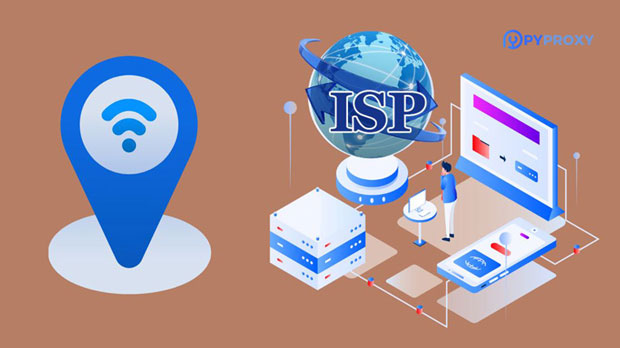nsocks VS pyproxy Which is the best residential proxy server site?
When it comes to selecting the best residential proxy server for your needs, NSocks and PYPROXY are two of the most popular options on the market. Both services promise to offer reliable and secure proxy solutions, but how do they stack up against each other? In this article, we will explore the key differences, advantages, and drawbacks of NSocks and PyProxy to help you decide which one is the right fit for your specific requirements. We'll dive into performance, features, pricing, security, and customer support, providing a comprehensive comparison to guide your decision. Understanding Residential Proxy ServersBefore we delve into the specifics of NSocks and PyProxy, it's important to understand what residential proxy servers are and why they are critical for online activities. A residential proxy server is a proxy that uses IP addresses provided by Internet Service Providers (ISPs), making the traffic appear as if it originates from a real residential location rather than a data center. This feature makes residential proxies highly valuable for activities such as web scraping, market research, managing multiple social media accounts, and bypassing geo-restrictions.Unlike data center proxies, which are often flagged by websites as being associated with bot-like activities, residential proxies offer a higher level of anonymity and are less likely to be blocked. They are seen as more legitimate because the IPs they use belong to real users, making them an essential tool for businesses and individuals who need reliable access to web resources without being detected.NSocks OverviewNSocks is known for its comprehensive approach to proxy solutions, offering both residential and dedicated proxy services. With a strong emphasis on performance and reliability, NSocks promises to deliver high-speed connections and an extensive pool of IP addresses. Their service is widely regarded for its ease of use and setup, as well as for offering a diverse range of proxy locations worldwide.One of the standout features of NSocks is its ability to handle high-volume tasks, which makes it suitable for businesses that require bulk web scraping or those looking to manage large-scale social media marketing efforts. Additionally, NSocks provides a variety of proxy types, including static residential proxies, rotating proxies, and mobile proxies, catering to a broad range of user needs.From a security standpoint, NSocks employs industry-standard encryption protocols to ensure the privacy of users. It also offers multiple authentication methods to protect against unauthorized access. In terms of customer support, NSocks provides 24/7 assistance via various channels, including live chat, email, and phone.PyProxy OverviewPyProxy, on the other hand, focuses primarily on providing high-quality residential proxies designed to offer anonymity and seamless browsing experiences. It is particularly popular among developers and businesses that require custom proxy configurations and flexibility. PyProxy boasts a user-friendly interface and a robust API that allows for easy integration into existing systems, making it an excellent choice for developers.One of the defining features of PyProxy is its use of rotating residential proxies. This means that users can avoid being detected by websites by frequently changing their IP addresses. PyProxy also offers geo-targeting options, enabling users to access content restricted to specific regions or countries.While PyProxy is known for offering top-tier residential proxies, it doesn't provide as wide a variety of proxy types as NSocks. However, its focus on rotating proxies and customizable configurations makes it highly suitable for web scraping, SEO monitoring, and data collection.In terms of security, PyProxy offers strong encryption and various methods to prevent leaks, ensuring that users’ identities and data are well-protected. Customer support is available, but the service is more focused on self-service, with an extensive knowledge base and user guides to assist with common issues.Key Differences Between NSocks and PyProxyWhile both NSocks and PyProxy offer reliable residential proxy services, there are a few key differences that may influence your decision:1. Proxy Variety: NSocks offers a wider range of proxy types, including static residential proxies, mobile proxies, and dedicated proxies. This makes it a more versatile choice for users with varied needs. PyProxy, on the other hand, is more focused on rotating residential proxies, which makes it ideal for tasks requiring frequent IP changes, such as web scraping or managing multiple accounts.2. Customization and Flexibility: PyProxy excels in customization, particularly for developers who require tailored solutions. Its robust API allows for easy integration and automation, making it a good fit for technical users. In contrast, NSocks is more geared toward a broader audience and provides simpler, plug-and-play solutions that require less technical expertise.3. Performance and Speed: Both services offer high-speed connections, but NSocks tends to have an edge in terms of handling bulk tasks and providing consistent performance over extended periods. PyProxy, while fast, may require more configuration to optimize performance for specific use cases.4. Pricing: Pricing can vary between NSocks and PyProxy depending on the type of service you choose. NSocks is generally seen as a more premium service, with pricing reflecting the range of proxy types and global locations offered. PyProxy, while slightly more affordable, may be better suited for businesses or individuals who prioritize rotating proxies over variety and customization.5. Customer Support: NSocks provides more extensive customer support options, including live chat and phone support. PyProxy, however, focuses on a self-service approach with detailed documentation, which may be more suitable for tech-savvy users who prefer finding their own solutions.Which One is the Best for You?The choice between NSocks and PyProxy ultimately depends on your specific needs and use cases. Here are a few factors to consider when making your decision:- If you require a diverse range of proxy types and need to handle bulk data tasks or manage multiple social media accounts, NSocks may be the better choice due to its flexibility and comprehensive service offerings. - If you are a developer or a business that requires a high degree of customization, particularly for web scraping or SEO tasks, PyProxy's rotating proxies and robust API may be a better fit.- For users who prioritize security, both NSocks and PyProxy offer strong encryption protocols. However, if you need more advanced authentication and 24/7 support, NSocks may be the superior option.- Finally, pricing will be an important factor. If budget is a concern, PyProxy may be the more affordable option, while NSocks is better suited for businesses or individuals who require a premium service with extensive features.ConclusionBoth NSocks and PyProxy offer excellent residential proxy services, but they cater to different needs and user bases. NSocks stands out for its variety, performance, and extensive customer support, making it the best choice for users who require a versatile, reliable, and high-performance solution. On the other hand, PyProxy is ideal for developers and businesses that need a more customizable and cost-effective service, especially for tasks that require rotating proxies.Ultimately, your decision should be based on your specific requirements, budget, and the level of support and customization you need. By carefully evaluating both services, you can choose the one that will best serve your proxy needs.
2025-02-28
























































